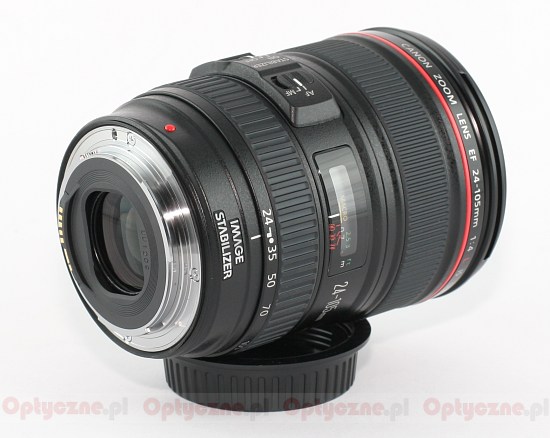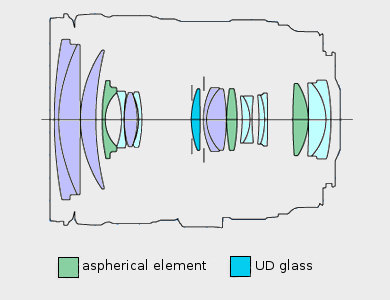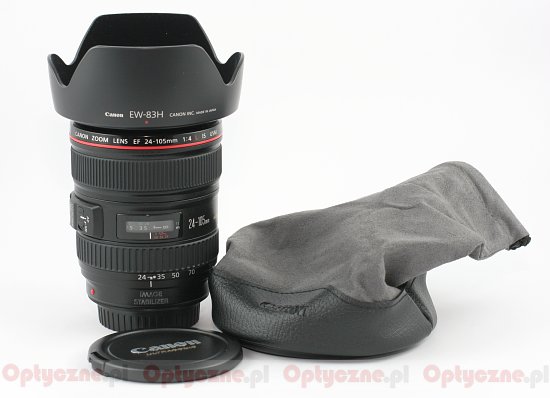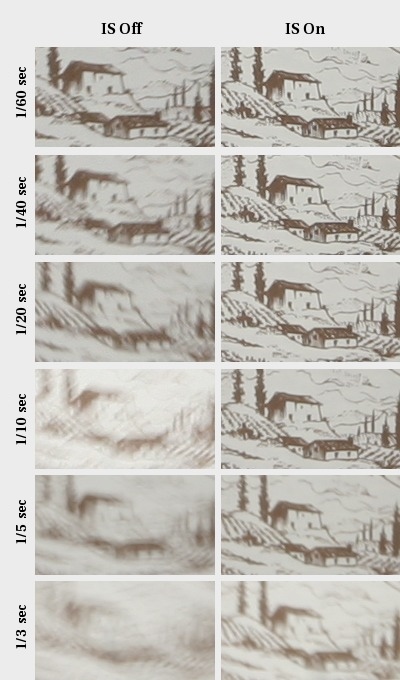Canon EF 24-105 mm f/4L IS USM
3. Build quality and image stabilization
The tested lens has a significant size and, additionally, we see a 1.5 times increase in dimensions on passing to 105 mm focal length. However, it would be unreasonable to expect that a full frame lens with a more than 4x zoom, an f/4 aperture, stabilization and an USM motor weighed little and was small.
 |
The build quality, as it is usual in the case of L instruments, is by and large perfect. We deal here with high quality magnesium alloys and a metal bayonet mount. We might have some reservations about one thing – the extending inner tube. It makes the lens not entirely weather-sealed and might cause dust ingress inside the device.
Please Support UsIf you enjoy our reviews and articles, and you want us to continue our work please, support our website by donating through PayPal. The funds are going to be used for paying our editorial team, renting servers, and equipping our testing studio; only that way we will be able to continue providing you interesting content for free. |
- - - - - - - - - - - - - - - - - - - - - - - - - - - - - - - - - - - - - - - - - - - - - - - -
 |
The lens is equipped with two comfortable and precise rings; the first, from the mount side, is a zoom ring, the second – a manual focus ring. If you ask me the zoom ring could have been either a bit wider or located a bit further from a camera body.
On the left side of a clear distance scale we also find a focus mode switch (AF/MF) and a stabilization switch, featuring just one mode in this case.

The lens’s weight, dimensions and parameters suggest that we certainly don’t deal here with a simple inner construction. It is really the case because the 24-105 IS consists of as many as 18 elements in 13 groups. It’s worth adding that one of these elements is a low-dispersion UD piece and three others are aspherical. Additionally, the Canon features an aperture with eight diaphragm blades and a non-rotating 77 mm filter thread. What’s rare for a Canon, the accessory kit is quite rich – apart from the caps we get a lens hood and a soft case.
 |
The Canon 24-105 IS, as its name indicates, is equipped with image stabilization which efficiency is supposed to reach 3EV. What’s interesting in the case of other Canon lenses our measurements indicated the value of 3.5 EV as the closest to reality, no matter whether the producer informed about 3 or 4 EV. We saw the same result here and a picture below shows it rather well – the same degree of fuzziness we noticed in 1/60 sec photo with the stabilization off and in a 1/5 sec photo with the stabilization on. It gives us a value at the level of 3.5-3.6 EV. The Canon should be praised then because in this particular instance we got a bit more than we had the right to expect.







